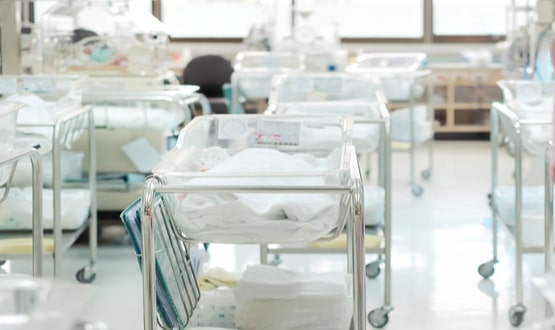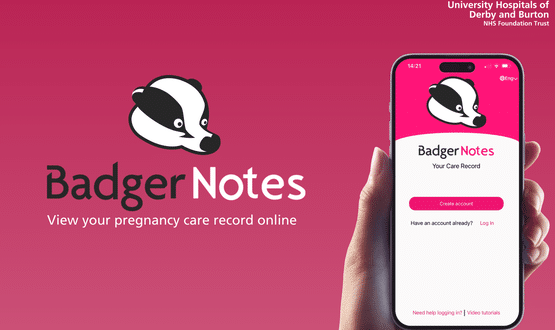After Ockenden, we need better data to prevent further harm
- 5 May 2022

Maternity services shouldn’t be waiting for whistle-blowers or inquiries to alert them to problems, says Dr Mark Ratnarajah, a practising paediatrician and managing director of C2-Ai. Instead systematic transdisciplinary reviews and real-time data should support a culture of shared learning, that helps ensure patient safety is everybody’s responsibility.
Like so many people, I was saddened to read the final report of the Independent Review of Maternity Services at The Shrewsbury and Telford Hospital NHS Trust.
The Ockenden report (named after Donna Ockenden, the midwife who led it) found that more than 200 babies died after “repeated failures” between 2000 and 2019 and documented many more cases of harm. It made more than 60 recommendations for the trust and another 15 for maternity services across the country.
However, I took two things away from the report. First, the trust had systemic problems and had them for a long time; so whatever processes were being used internally and externally to identify harm and support patients and staff had not been working.
Second, when failings occurred, voices of people within the multi-disciplinary team and families were not heard; which suggests a failure of leadership and a culture of denial. If we are going to deliver better, safer maternity services now and in the future, we need to address both issues.
Are maternity services safe?
Following Ockenden, the question that many people are asking is: ‘Are our maternity services safe?’ Not just at one trust or another, but across the board. And that’s a very difficult question to answer, because our organisational and informational structures are not set up to answer it.
In an interim report, Ockenden suggested that the Health Safety Investigation Branch should conduct maternity reviews, and it has set up a maternity programme. This is a welcome development. However, by its nature, its investigations are likely to have limitations in terms of scope and resource.
It will likely focus on catastrophic events, and whilst investigations of such events are important, trusts shouldn’t be waiting for whistle-blowers and inquiries to tell them that they have a problem. Also, it will be looking to identify problems, or what went wrong, which could perpetuate a culture of blame, making it difficult for lessons to be learned and embedded within ongoing clinical practice. We need to examine and learn from both good and bad practice.
The Care Quality Commission also has an important role in assuring the safety of services. However, it tends focus on compliance with policies and procedures, rather than clinical outcomes and effectiveness. And levers for organisational change can be limited. The regulator can put a trust into special measures, but ultimately it is for the trust to improve – and boards rarely have the insight they need to do that proactively.
It’s very telling, to me, that most NHS trust annual reports focus on key operational and financial metrics and aspirations. It’s very rare to see reports that include a systematic investigation and a programme of implementation based on the quality of clinical services provided.
Let’s use the data more effectively
So, how do we move towards a position in which we can be assured that our maternity services are safe? One thing we can do is use data more effectively.
At the moment, hospitals do conduct structured judgement reviews of deaths, but because these are relatively uncommon events in maternity services, the focus on mortality does not pick up the harm and near-misses that are an important part of the safety picture. Also, at a time when all clinical staff are under an immense amount of pressure, there’s a danger of reviews becoming an administrative exercise, rather than a learning opportunity.
What services should do, as a matter of routine, is to review and benchmark performance on an ongoing basis, ideally risk adjusted for their patient case mix. That will tell them whether any incidents that they identify are isolated events or evidence of systemic issues. It will tell them whether incidents are decreasing or increasing, and help with root-cause analysis to remedy potential problems.
At the same time, we need to get useable and understandable data into the hands of patients and clinical teams. As things stand, there is no lack of data, in fact there is a lot of data. It just so happens that it is often collected on paper, within siloed computer systems, or in unstructured formats that are difficult to share. The benefits of detailed data collection are subsequently lost between agencies and important clinically relevant information isn’t understood or actioned appropriately. The law of unintended consequences means that omissions of care in one part of the system are not being picked up along the pathway of care to the detriment of the patient.
For the most part the mother and baby will probably be fine, but it is often the exception that breaks the rule that ultimately may lead to avoidable harm.
Some other areas of medicine have really started to address this. There has been a big focus on reducing sepsis and acute kidney injury by rolling-out systems that give staff near real-time, quantifiable risk information about the most vulnerable patients. This enables all caregivers to take responsibility and identify who to focus attention on, and who to proactively monitor so they can escalate appropriate intervention in a timely manner. Maternity services need the same kind of transdisciplinary thinking and relevant data sharing.
Developing and supporting safety culture
Critically, though, what we need is not just more data but a change of mindset.
If you really want to be confident that you are delivering a high quality, safe service, you need good leadership and a learning culture. By that, I mean a culture that accepts that healthcare delivery can be fraught with risk, and that people will make mistakes from time to time. Importantly trusts must put systems in place to support staff in order to stop mistakes escalating and leading to avoidable harm, and that empower staff to learn.
Ultimately, we all strive towards best practice, but before it can become a reality, we need to recognise that quality and patient safety is everybody’s responsibility. We need to shine a light on and learn from exemplars, as much as we learn from mistakes. Modern data systems have a role to play in supporting safe processes, but it’s when they are combined with good leadership and a culture of learning that we really see reproducible results.
Whistle blowers and inquiries come too late
I hope the Ockenden inquiry has delivered some comfort to the parents whose babies were harmed, and that the adoption of its recommendations will make maternity services safer.
However, we need to recognise that any inquiry, even a landmark inquiry, represents to some extent a failure of process. Inquiries pick up systemic failures that should have been identified and addressed earlier.
What we need is to move towards systematic clinical review and use findings to create safer processes and learning that is imbued within the culture of the organisation, supported by relevant technology that delivers real-time data to staff and empowers them to do the right thing time and time again.
All of us who work in the NHS are at the service of our patients. Any inquiry or legal case erodes patient confidence. So, it is incumbent on us to create systems and cultures that promote quality and enable us to say: ‘I know we are practising safely; but we’re still working to make it even safer.’





4 Comments
This is the fundamental point:
“Critically, though, what we need is not just more data but a change of mindset.”
The mindset will enable the data to be collected, but MORE importantly, a safety culture (which will take time to emerge) will assist the provision of better care & the avoidance of near-misses, serious incidents, and never events.
We used the C2ai product to sort out our waiting lists.
Worked well- we removed a lot of people that didn’t need the operation and re-prioritised the ones that were left. Was much quicker and cheaper than doing manually.
Totally agree…. we are looking forward to brining even more sites on board over the months ahead to join the single national pregnancy care record. Providing all hospitals involved with the ability to share the same single pregnancy record for streamlined joined-up care going forward. The opportunities for AI and decision support are huge as this massive single national perinatal care record database gets larger by the day. Exciting times ahead!
This is absolutely right.
At the moment we are in the dark ages as far as using our data goes. The NHS is incapable of doing this innovation on its own and needs to work with trusted partners with a good track record of security to make this happen. Have worked with C2ai’s tech people and they really know what they are doing.
Comments are closed.